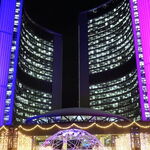SFO-YYZ
Active Member
Member Bio
- Joined
- Feb 21, 2016
- Messages
- 346
- Reaction score
- 1,076
- Location
- Plateau-Mont-Royal, Montréal
In downtown core, there is only 1 substantial east-west fully protected bike lane I'm aware of, and that is on Maisonneuve (I'm excluding the one in old port because 1) it's not fully protected 2) it's out of the way for most cyclists who are commuting from downtown to home).In one of the original designs for the light rail line, they proposed cutting the southern half of René-Lévesque boulevard and converting it to green space, bike lanes and the light rail. The provincial transportation ministry opposed it because of the significance of the boulevard for car traffic.
And for your information, there is a bikeway along almost the entire route of the REM B already.
I'm sure Montreal could use another fully protected east-west bike path downtown, and RL could be the ideal place to do that if we can fit it above or under an REM line like the Berlin U1 propoasal:







